 streettrucks
.
September 08, 2020
.
Department
streettrucks
.
September 08, 2020
.
Department
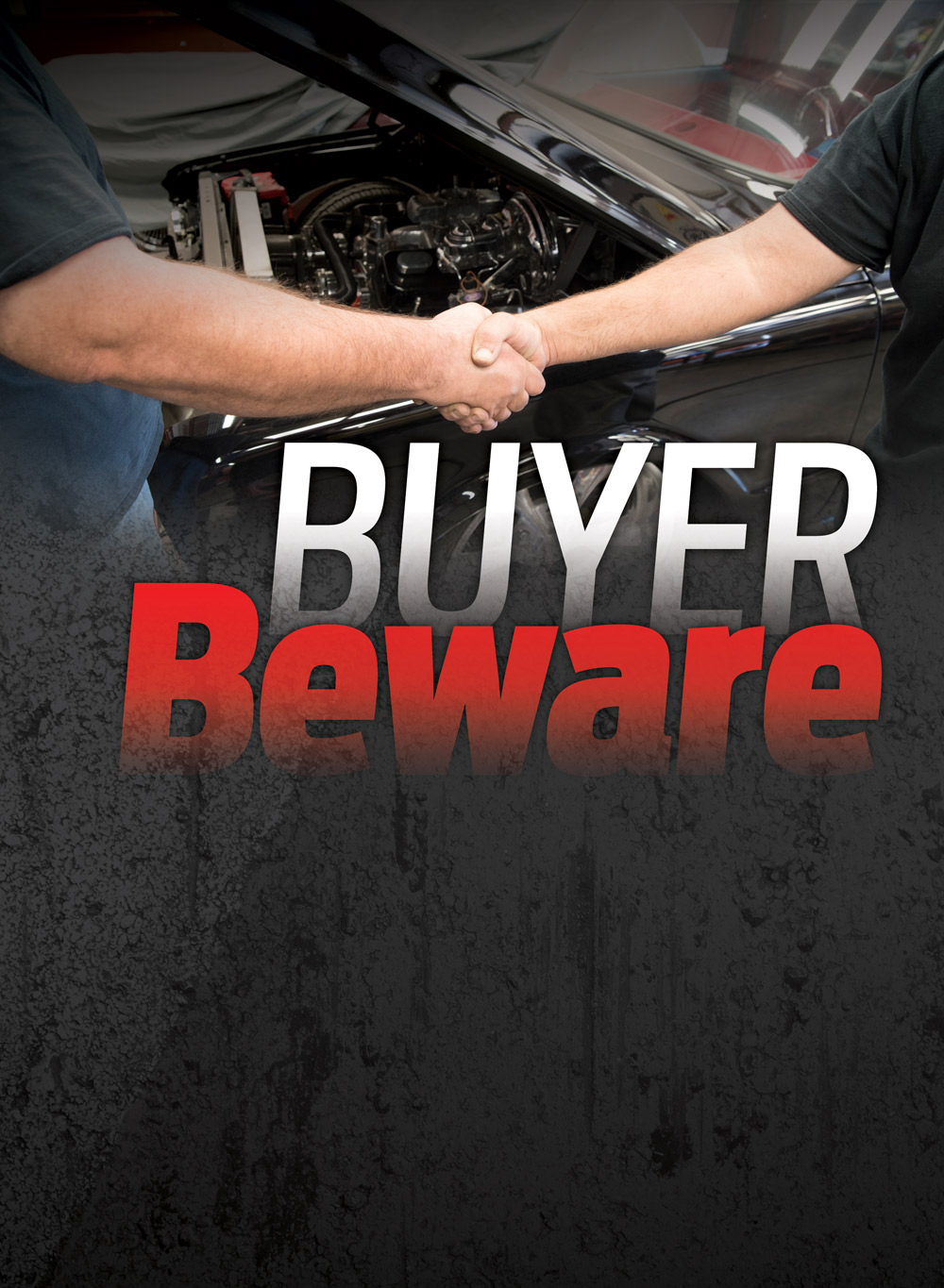
BUYING A PROJECT TRUCK THAT’S ALREADY MODIFIED CAN EITHER SAVE YOU A LOT OF MONEY OR CAUSE YOU A LOT OF HEADACHE AND COST MORE MONEY THAN YOU WERE PREPARED TO SPEND. You never really know for sure what’s up with a truck until you tear into it, so how can you prepare yourself to make the best decision possible when you’ve decided to tackle someone else’s forgotten dream?
We were recently at American Customs & Classics in Hollister, California, to see what owners Richard Dean and John Oliveira were working on, and after talking for a while, we asked what people should consider when buying a custom, yet unfinished truck. The conversation got interesting, so we grabbed our audio recorder and transcribed it for you guys. Check it out.
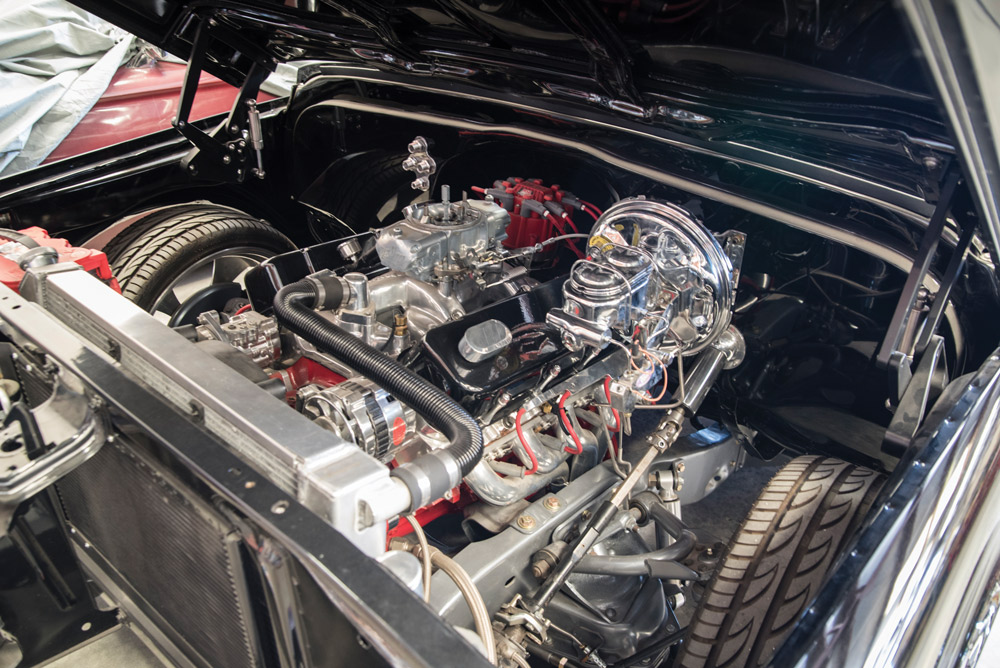
ST If you want to buy some else’s unfinished project, and it’s already had some custom work done, how do you make sure you’re getting a good deal? The goal in this scenario, hopefully, is to come out ahead by saving money on parts and labor while helping a fellow truck enthusiast get out from underneath their project.
JOHN: I think it depends on whether or not the person buying it is planning on doing any of the work to finish it themselves. They might feel comfortable doing their own bodywork, so that might not be a big deal to them. Personally, I’d rather buy something with mechanical issues because I can deal with all that, but it’s going to depend on what the buyer’s strengths are. They might know how to build an engine all day long or set up a 4-link, but they might be scared of wiring. You have to take those things into consideration.
RICHARD: The seller is usually losing money, so you just have to figure out if the cost of the parts and labor included saves you money in the long run.
ST What should someone look for when they’re checking out a truck with a modified chassis?
JOHN: The first thing you need to look at is the quality of the welds. They’ll tell you the direction the guy was going with the project. Was he taking the time to do things right, or was he rushing and skimping everywhere? If the welds look like popcorn, that’s a big red flag that the rest of the truck is gonna be junk.
RICHARD: Also, make sure the welds have penetrated the metal and aren’t just sitting on top, otherwise you’re going to have to fix all that.
When checking out an unfinished potential build, pay attention to things like the welds, which are a sure sign of the level of care taken with the job.
“THE FIRST THING YOU NEED TO LOOK AT IS THE QUALITY OF THE WELDS. THEY’LL TELL YOU THE DIRECTION THE GUY WAS GOING WITH THE PROJECT.”
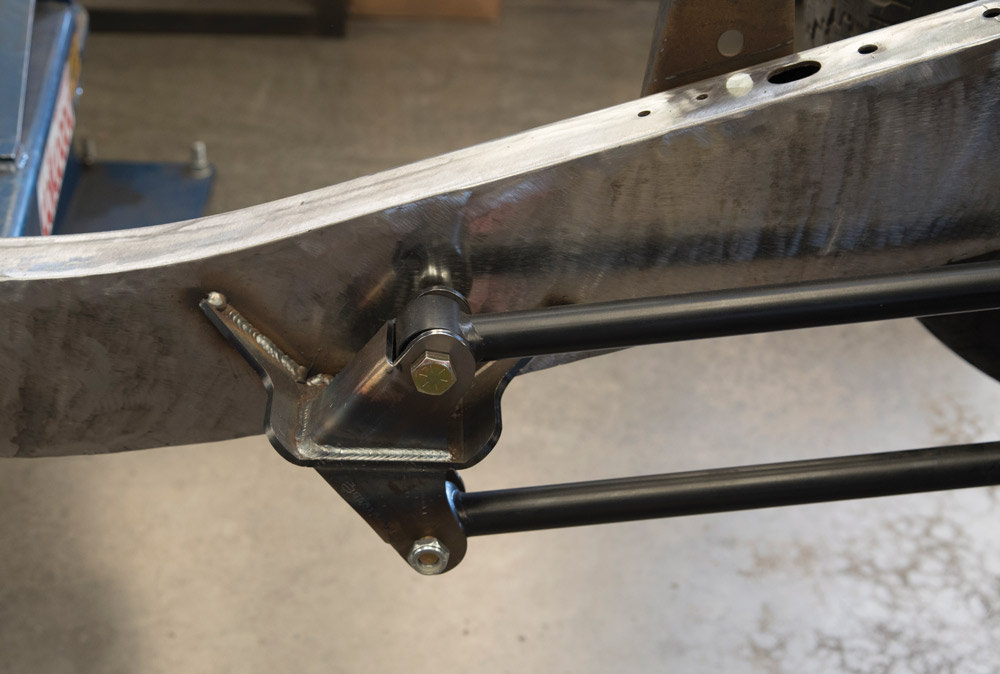
ST What if there’s major work underneath, like a different front frame clip?
RICHARD: If they put a Mustang II front end under the truck or clipped it with a Camaro subframe, you want to make sure everything is welded in nice and square. Take some cross measurements and check to make sure the wheels are in the right spot in the wheel arches, or it’s gonna cost a lot of time and/or money to fix. You’ve also gotta see where they clipped the front end to the frame and make sure that it’s plated in and secure.
JOHN: A tape measure is your best friend for stuff like that.
ST Let’s get into bodywork. You obviously have to be careful, and people aren’t always upfront about the condition of the body, so how can you tell what you’re getting into?
RICHARD: Use a weak refrigerator magnet and see if it sticks, or you can even just use the tap test to see if [the body] sounds solid or full of filler. Unfortunately, you can hide a lot with fiberglass and Bondo. We had an El Camino in here a little while ago that had plywood in the floors, and you could see where fiberglass was laid into the quarter panels to hide the rot. At first glance, the bodywork didn’t look bad, but once we tore into it, it was a big mess. Check the radiator support and the frame horns to see if they’re square. Sometimes everything will look good, but then you look underneath and you’ll see where something’s been pulled out after a wreck.
JOHN: Check the rockers and make sure they’re in good shape and not rusted out underneath. Check everywhere for rust, even under the dashboard. Water and moisture can get to places you’ve never thought of and can cause big problems if you don’t know they’re there. A couple of small holes can ruin an interior if you don’t catch them.
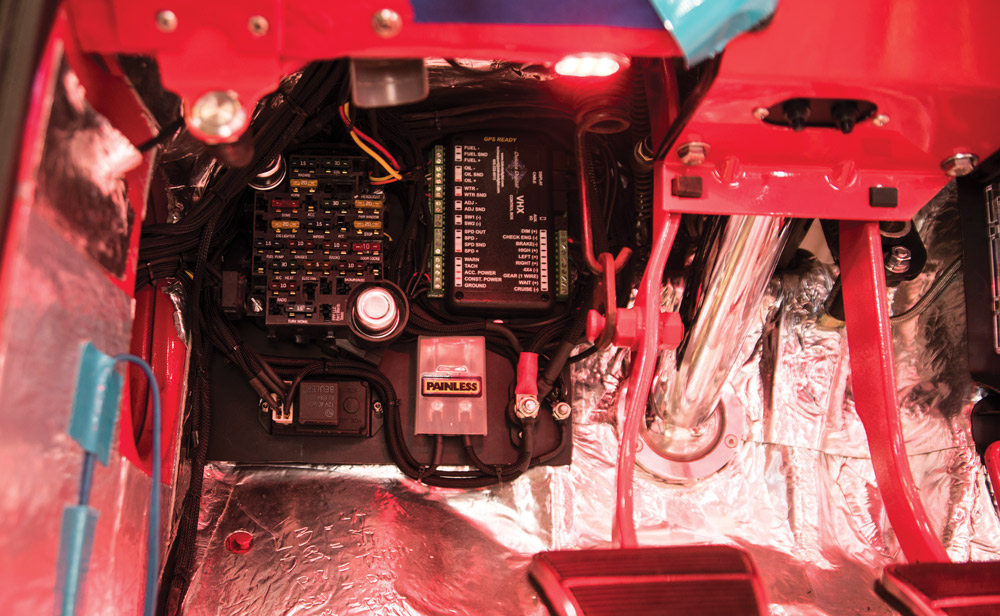
ST What part of buying someone else’s unfinished project can end up being surprisingly expensive?
RICHARD: Paying someone to do wiring can be pretty expensive. I’d say the average time to rewire an entire truck can be 40 hours.
JOHN: And that’s for a standard truck. If you want all of the wires tucked and hidden, that drives the price up, too.
ST On that note, a lot of ads for projects on Craigslist will say something like, ‘just needs wiring.’ Is that a red flag?
RICHARD: It can be. If you’re good at doing wiring yourself, it might not be a problem; but if not, that’s a red flag that you’re going to be spending some cash.
JOHN: I don’t mind doing wiring, so for me it’s not a big deal. But a lot of people don’t like dealing with it, and it’s expensive to have a shop do it.
Quality parts are a good indicator of a solid build, such as this RideTech ShockWave/StrongArm setup on this S- 10 chassis [in the shop right now], which will be home to a Chevy AD. Even small details like the Moog tie rod ends are a sure sign that this project is being done the right way.
ST When on Craigslist, what are some signs that a truck is worth checking out?
JOHN: The quality of the parts they’ve listed is usually a good indicator that you could be getting a deal.
RECHARD: I won’t name names, but there are some brands you just want to run away from. I’ll have customers bring parts in, and I have to tell them that I won’t install them because I know they won’t fit, or they’re going to fall apart. If you see questionable parts listed like it’s a good thing, run. But if you see, like Ridetech or Accuair or Hotchkis, you know they at least spent money on good components.
JOHN: Also, lots of photos in an ad is a good sign when you’re looking at Craigslist. They let you have up to like 24 photos on there, so the more the better.
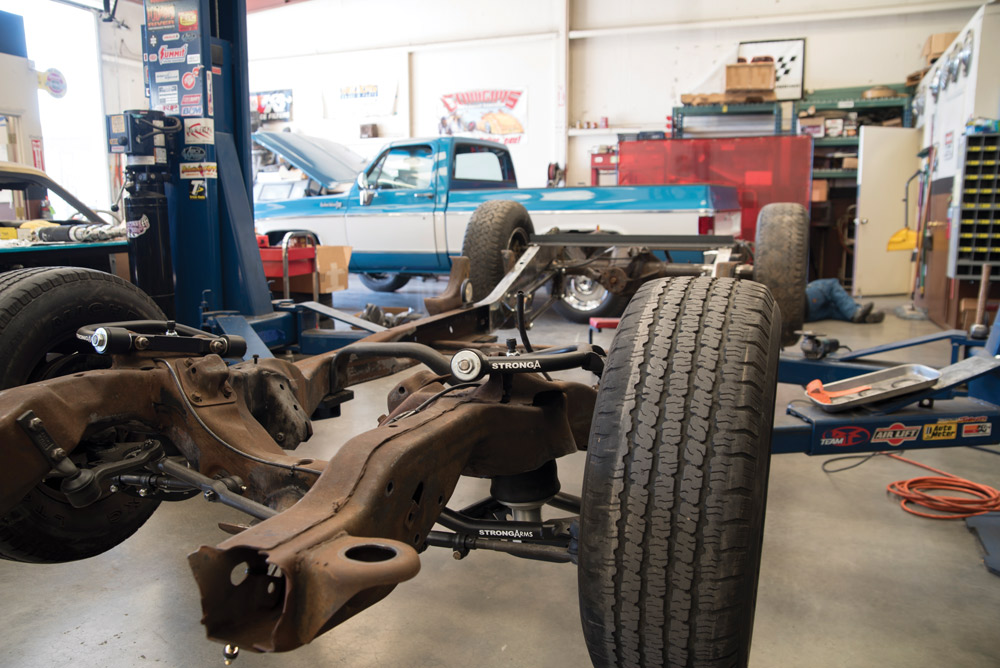
ST What about the other side of the coin? What are some bad signs in an ad?
RECHARD: Being vague in the ad description is usually the biggest red flag for me. You should try to have a list of questions ready before you call someone so you don’t forget to ask anything before driving out. There are definitely times I wish I had asked more questions. We drove nine hours to go check out a truck, and before we were 30 feet away we knew it was a mistake.
JOHN: It’s not always the case, but if there are only one or two photos, they might be trying to hide stuff, especially if there are no close-ups. Sometimes you have to go check something out anyway to be sure you’re not missing out. I’ve actually given someone an extra couple hundred bucks just because the car ends up being better than the ad says.
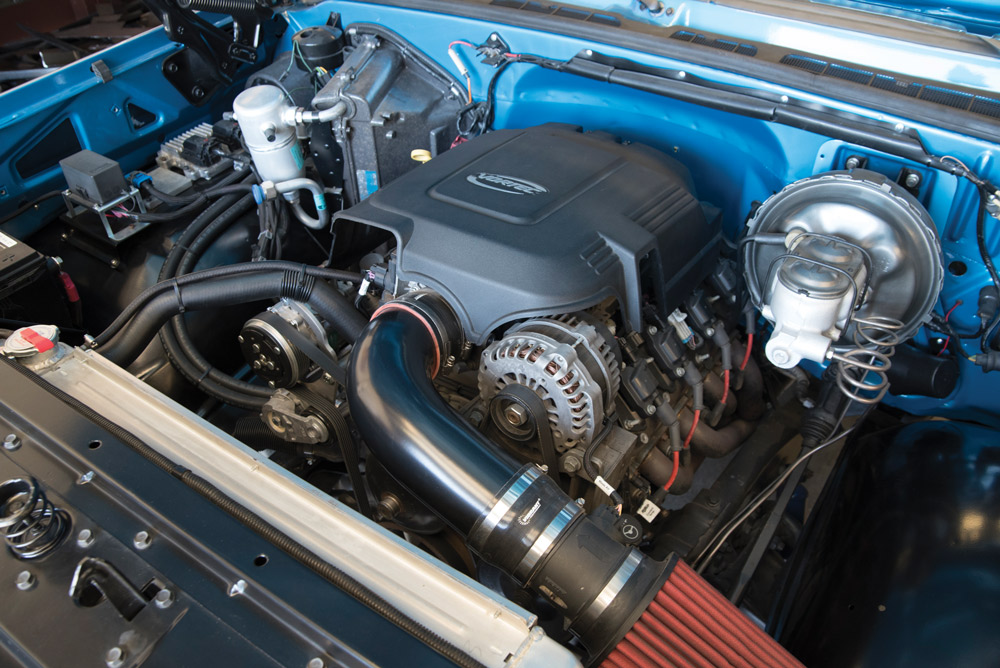
ST If you’re buying something that runs, or will supposedly run with minimal work, what should you look for?
RICHARD: You want to check for the typical stuff: oil leaks, missing parts …
JOHN: Yeah, that’s another important part, too. How good is the drivetrain? If you want to buy a driver, that’s very important. And with the LS swaps everyone is doing, you don’t really know what condition they’re in. A lot of those engines have two or three hundred thousand miles on them. They could tell you it has twenty or thirty thousand, but you don’t know. Same thing with the transmission; at least if it moves under its own power, you know you should be good for a while, and you can just work on it if you need to.
Keep an eye out for things like leaks and the condition of U-joints if you plan on driving your new project right away. They can get you stranded in a hurry if they’re in bad shape.
Of utmost importance is how straight the chassis is. If things are out of whack, you’re eventually going to have to start over. Look out for things like crunched frame horns and kinks in the frame that may have been pounded back out.
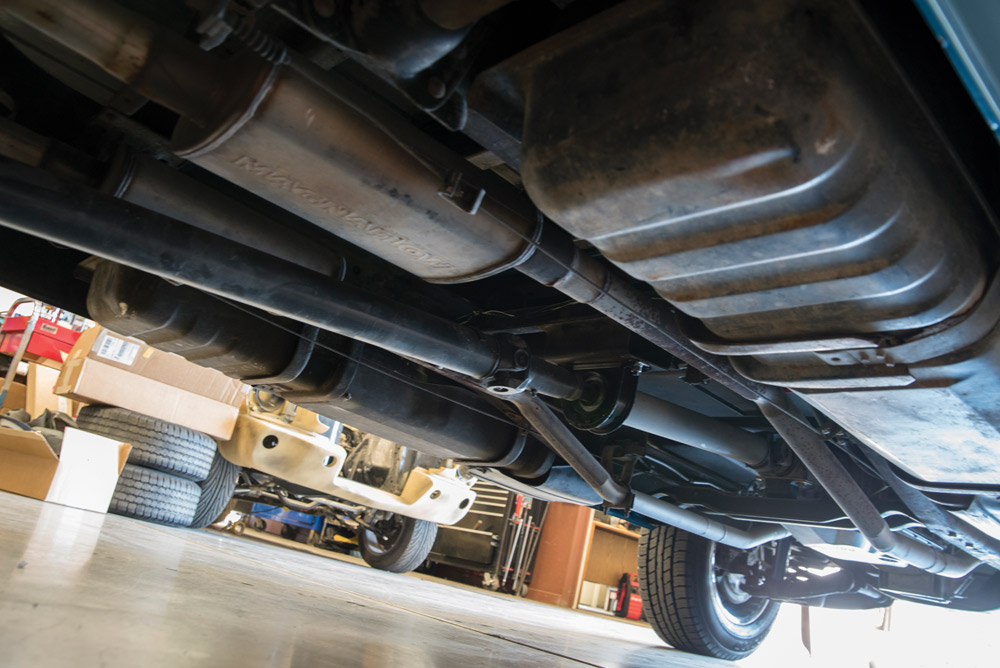
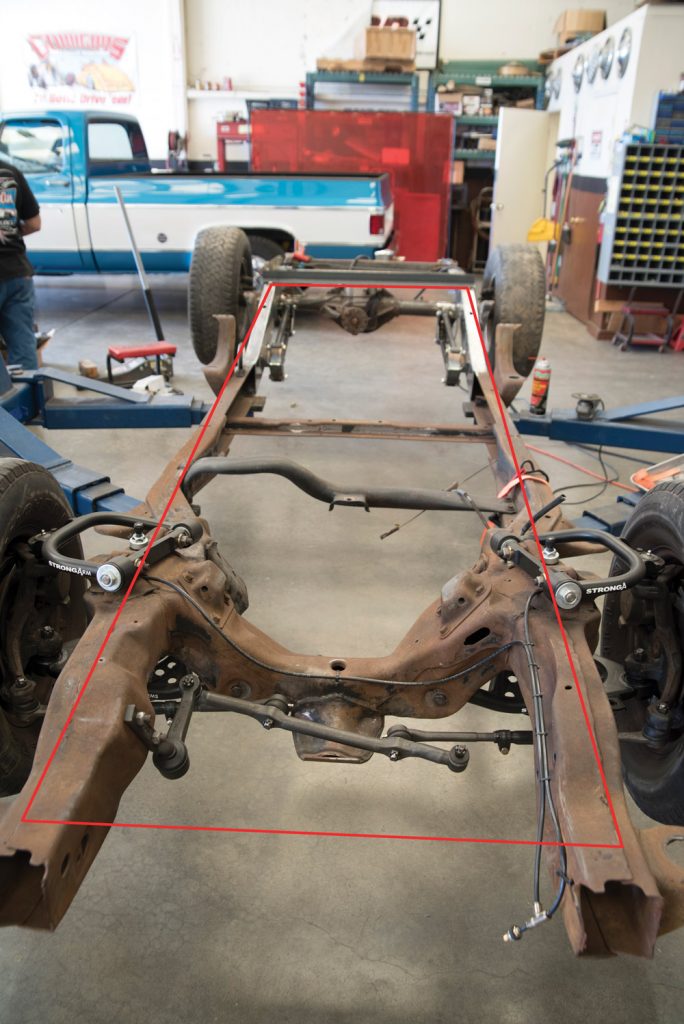
ST It’s easy to get excited about a truck you see for sale, especially if it has the right stance and already has airbags. How do you make sure your vision isn’t clouded by what looks like an awesome truck but may really be a nightmare?
RICHARD: With things like air ride, if they didn’t set it up correctly, you’re going to have to redo it for safety. You have to make sure everything is done right. If stuff is rubbing, you’re going to have to redo it. Look underneath and look down the frame rails to make sure they look straight. We had a ’37 in the shop, and we were checking it out, looking at the cross member, and something didn’t look right. So, we busted out the tape measure and one of the rails was wavy.
JOHN: That was from excessive heat. They welded on that frame so much without letting it cool down that it got all distorted and was basically unusable. They boxed in the frame with sheet metal and actually welded the engine mounts to the sheet metal.
RICHARD: The customer thought the project was at least a third of the way finished, but we had to break it to him that we had to start over with a new frame. It doesn’t make sense to try to save stuff like that. It was cheaper for him to start fresh than to try to salvage what was already done. He would have been better off buying an aftermarket chassis the first time around.
ST To make sure we’re covering all of our bases, is it better just to start fresh with a stock truck as a project, or can someone truly get a good deal by buying something unfinished that has already had some custom work done to it?
RICHARD: Yes and no. You can typically get a stock truck for less, but with a lot of the custom ones … people are probably losing a lot of money on stuff they’ve bought for the trucks and the labor, so you’re also gaining a lot by buying one like that.
JOHN: A lot of the time, the boxes of parts that come with a truck are worth more than the truck itself. A lot of times you can think, ‘I got this truck for $500,’ but you’re obviously going to be throwing tons more into it. You can find someone who started a project, but for whatever reason they have to dump it: family reasons, health reasons, they’re buying a house or trying to keep from losing their house. Not to take advantage of someone, but you could be getting something that has a lot of money into it for pennies on the dollar. Buying someone else’s project that’s halfway or three quarters of the way done, you just have to make sure everything’s done right and is the way that you would want it done. In my opinion, I think buying someone else’s project is the way to go, depending on the condition.
ST Okay, so it’s decision time. You’re checking out a truck, and you’ve got a trailer ready to go and cash in hand, any last-minute advice?
JOHN: You can’t be afraid to walk away. Even after you’ve spent money to get out there, and maybe you’ve even rented a truck and trailer, you have to be willing to cut your losses. Don’t feel like you have to buy something just because you’ve got some money into getting out there to see it. Actually, you should plan on that so that it’s part of your truck-buying budget.
RICHARD: Unless it’s some rare truck like an International or a rare trim model that you’re not going to find anywhere else, you’re better off passing on it. If it is rare and you need something like fenders, you have to plan for that, too. It’s taken me months to find parts sometimes, and sometimes you don’t find them at all.
JOHN: I hate to say it, but you should also find out if there’s any back registration due by calling the DMV, and make sure to get the title. It could end up costing you another thousand in back fees.
RICHARD: Yeah, not having a title is a red flag that you should run the VIN number and make sure they don’t owe a lot on the registration. It could end up being stolen, or you might have to get a VIN verification, which can be a hassle. It’s also always a good idea to take a buddy with you, because they might see stuff that you don’t, good or bad.
JOHN: Not to make the seller feel uncomfortable, but having someone else there with you can help since they can be checking things out while you’re talking to the seller.
RICHARD: If you can, have someone who knows more than you go with you so you can avoid making a big mistake. You almost have to go with a pessimistic mentality and expect to leave emptyhanded so you don’t regret it later.
JOHN: Your buddy can help you walk away if you’re not seeing straight.
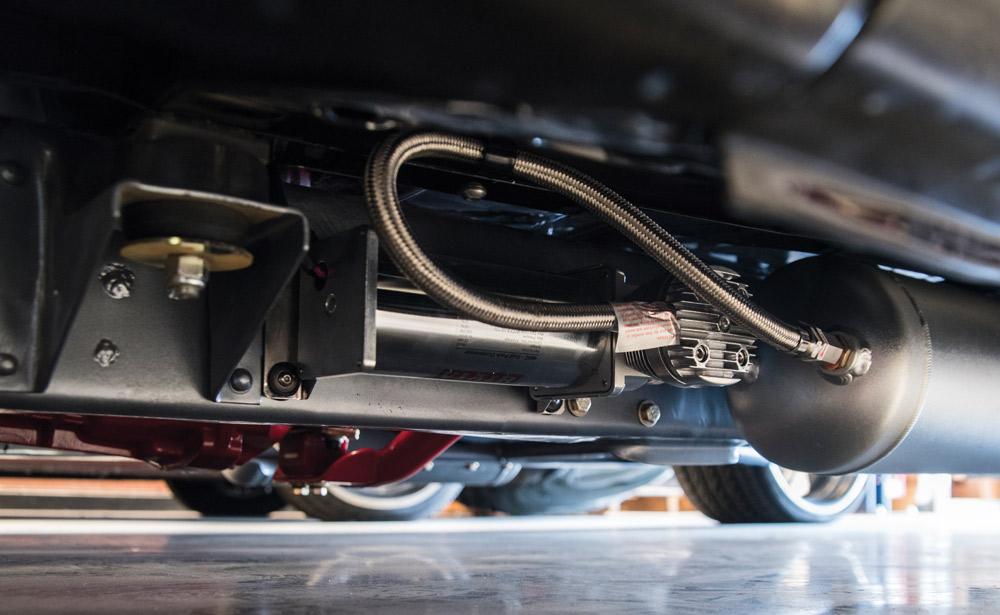
ASSUMING that you’ve found the truck you want and you can’t pass up the amazing deal you’re getting, don’t forget that it probably sat for a long time. Stuff may have been loosened up and forgotten about, so once the truck’s on the trailer, we suggest a few precautions to avoid disaster on the highway:
Thanks again to the guys at American Customs & Classics for spending the afternoon with us and sharing their expertise.
SOURCE
American Customs & Classics
831.630.1965
Acchollister.com
Facebook.com/AmericanCustomsClassics
Share Link